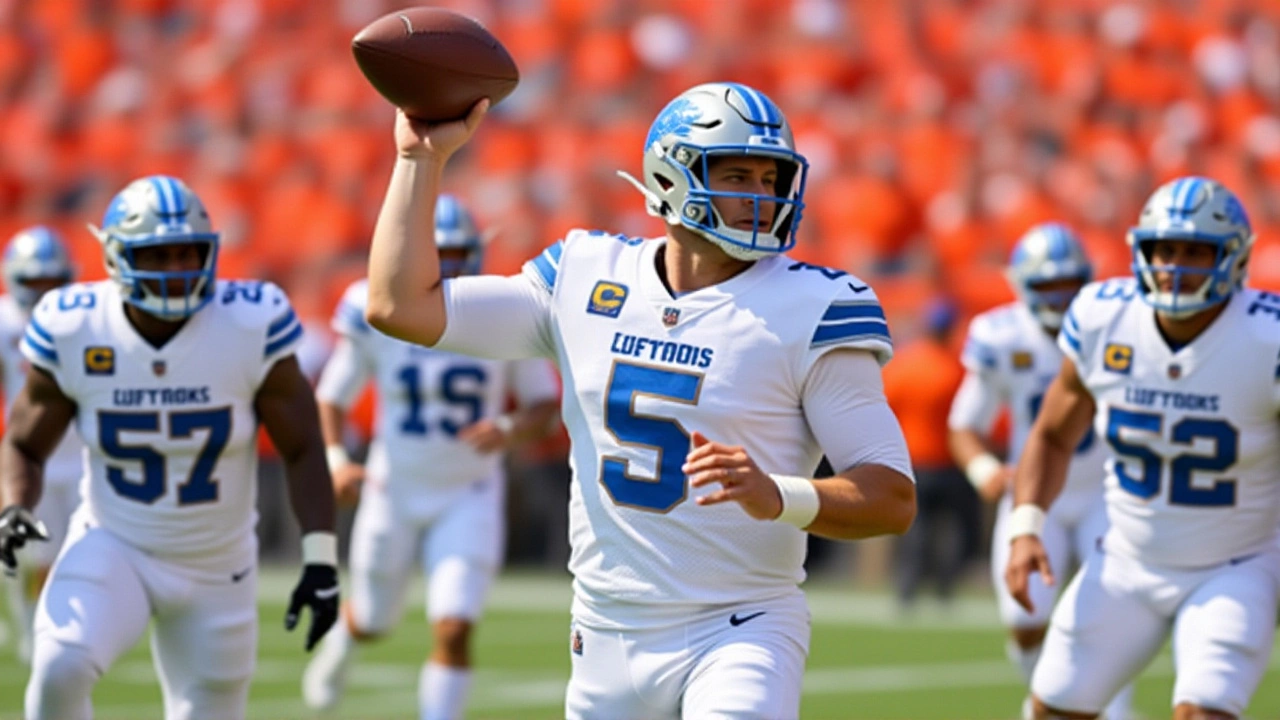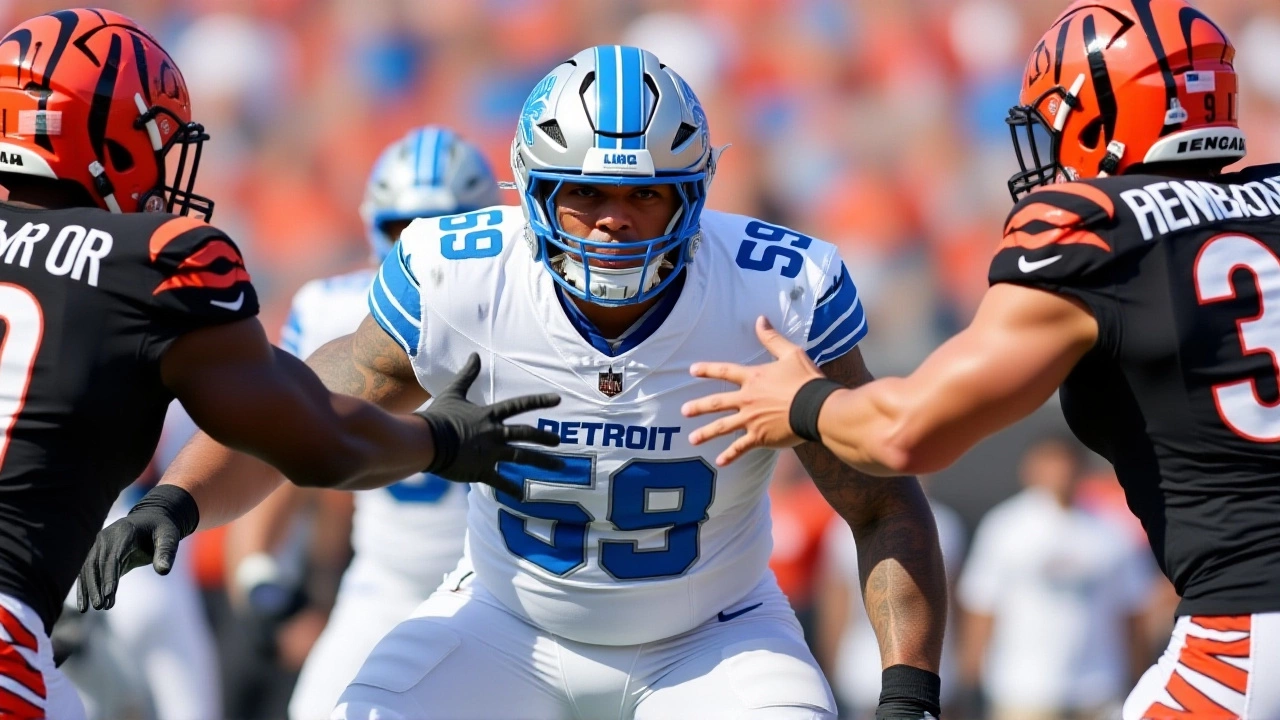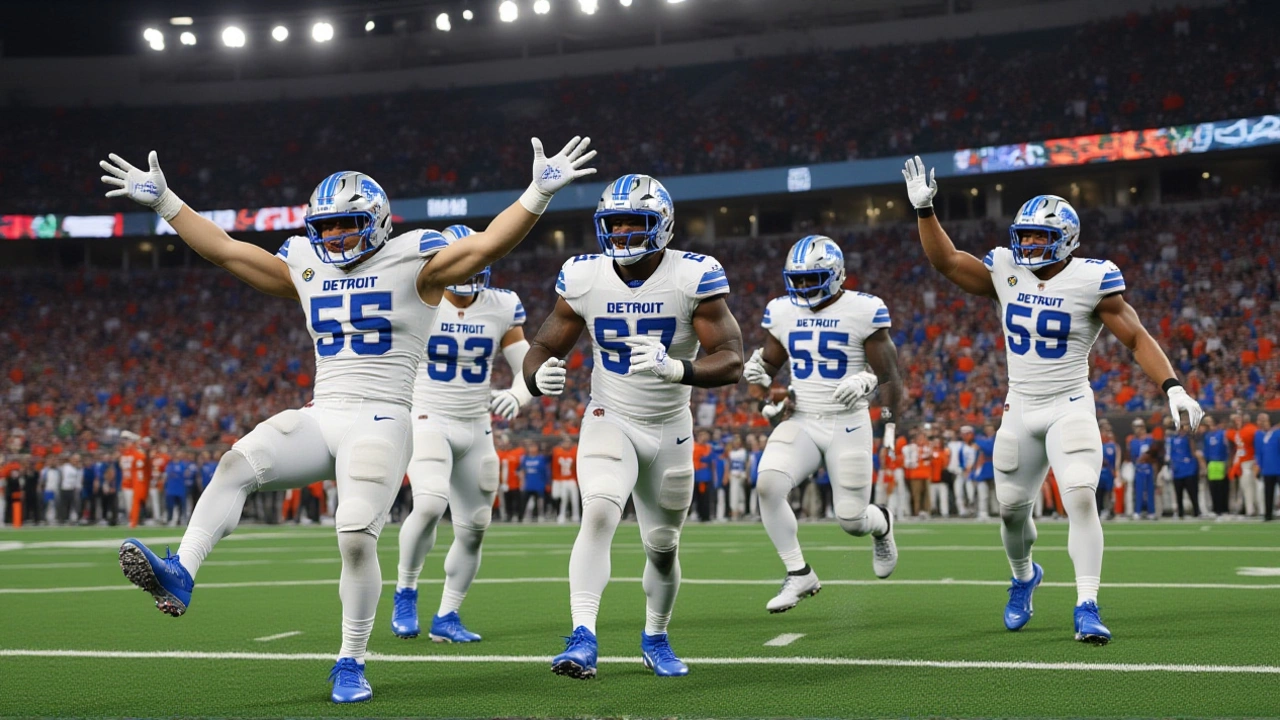When Detroit Lions published its projected 2024‑25 depth chart, fans got a snapshot of a team riding a 4‑2 start and perched atop the NFC North. The roster details, gathered from CBS Sports, Ourlads.com, ESPN and the club’s own site, show quarterback Jared Goff, starting QB locked in, while a slew of position battles promise to keep the locker room lively.
- Key takeaway: The Lions’ offensive scheme leans heavily on a 3‑WR‑1‑TE set (about 53% of snaps).
- Defensive base is a 4‑3 alignment, with a strong interior line anchored by Alim McNeill.
- Special teams feature punter/kicker holder Jack Fox handling dual duties.
- Head coach Dan Campbell, Head Coach remains the architect behind the play‑calling.
- General Manager Brad Holmes, GM has kept the roster stable after last year’s draft haul.
How the Lions' Roster Shapes Up
Offense at a Glance
The quarterback room is clear‑cut: Goff, now 30, brings a veteran’s poise, while Kyle Allen serves as the backup. Running back duties are split between David Montgomery, the 27‑year‑old workhorse, and the rookie sensation Jahmyr Gibbs, who earned a secondary role after a strong preseason.
At tight end, Sam LaPorta and Brock Wright form the core rotation, with Kenny Yeboah providing depth on special packages.
Tight End and Wide Receiver Battles
The WR room is where the drama mounts. Veteran Kalif Raymond is listed as a starter and also handles punt returns. The third‑wide‑receiver slot is a toss‑up between Tim Patrick and Isaac TeSlaa. Both players have comparable size (around 6‑4, 230‑lbs) but differ in route‑running style, which could influence how offensive coordinator John Morton pieces his packages.
Isaac’s backup spot is already set, and the depth chart notes a clear hierarchy: Patrick’s experience versus TeSlaa’s athletic upside will likely be decided by spring competition.
Defensive Alignment and Key Players
Front Seven Overview
The interior defensive line features Alim McNeill at defensive tackle, offering a blend of run‑stopping power and occasional pass rush. Across the line, Ezekiel Turner is listed as a linebacker, capable of sliding into a edge‑rushing role in nickel packages.
Defensive coordinator Kelvin Sheppard prefers a base 4‑3, which means three down linemen and four linebackers at the snap. This setup gives him flexibility to rotate players like Rashod Hill and Will Harris into edge positions depending on the opponent.
Secondary and Pass Rush
The secondary is anchored by cornerbacks Jameson Williams and Jeffrey Okudah. Safeties rotate between free‑safety Will Hill and strong‑safety Miller Forristall. Their ability to stay home on deep passes will be pivotal as the Lions aim to improve a pass‑defense ranking that lingered in the middle of the league last season.
Special Teams and Hidden Gems
Special teams are often overlooked, but the Lions have a multitasker in Jack Fox, who punts, holds for field goals and even lines up as the emergency kicker if needed. Kicker Jake Bates brings a reliable 48‑yard average, while long‑snapper Hogan Hatten has been praised for consistency.
Return game duties belong to Raymond on punts and Jacob Saylors on kickoffs, with Sione Vaki ready as a backup. Their combined speed could flip field position in close games.

What the Numbers Mean for the NFC North Race
The Lions’ 4‑2 start puts them a half‑game ahead of the Minnesota Vikings, who sit at 3‑3. Statistically, Detroit’s offense is ranking in the top‑10 for yards per game, driven largely by Goff’s efficient passing and Montgomery’s balanced rushing. Defensively, the team’s points‑allowed metric has dropped from 27.0 last season to 22.5 this year, a testament to Sheppard’s revamped scheme.
Analysts point out that the WR3 battle could be a deciding factor in matchups against rival Green Bay, where a deep passing attack often dictates outcomes. If Patrick or TeSlaa can consistently gain 80‑plus yards per game, Detroit’s offense could maintain its current scoring pace.
Looking Ahead: Injuries, PUP List, and Upcoming Matchups
The practice squad currently holds several wide receivers wearing the number 85 jersey, awaiting a chance to move up. Meanwhile, the PUP (Physically Unable to Perform) list includes a few defensive backs who missed training camp due to lingering injuries. Their return date remains unclear, but the coaching staff hopes to have them back before the week‑9 showdown with the Chicago Bears.
Next week’s clash against the Kansas City Chiefs will be the first real test of the Lions’ pass‑rush depth. With Turner expected to pressure Patrick Mahomes, the outcome could either solidify Detroit’s defensive confidence or expose lingering gaps.

The Lions' Legacy and Recent History
Founded in 1929 as the Portsmouth Spartans, the franchise moved to Detroit in 1934 and has called Ford Field its home since 2002. The 65,000‑seat venue has witnessed two Super Bowl runs, most recently in the 1991 season.
Since taking over in 2021, Dan Campbell has injected a gritty, “always competing” culture. Combined with Brad Holmes’ roster‑building philosophy—emphasizing draft value and strategic free‑agent signings—the Lions appear poised to break a decade‑long playoff drought.
Frequently Asked Questions
How does the WR3 battle affect the Lions' chances in the NFC North?
A reliable third receiver adds depth against defenses that stack the box. If Tim Patrick or Isaac TeSlaa can consistently produce 80+ receiving yards, Detroit gains a crucial boost in two‑minute drill situations, often swinging close games against division rivals.
What impact does the 4‑2 start have on playoff seeding?
A strong early record locks the Lions into a top‑seed position in the NFC North, giving them at least one home‑field advantage in the divisional round should they win the conference championship. It also cushions against a potential mid‑season slump.
Which players on the depth chart are most likely to see increased playing time?
Rookie running back Jahmyr Gibbs is expected to earn more snaps in a rotating backfield, while special teams ace Jacob Saylors could see a larger role as a returner if the Lions focus on field‑position battles.
What are the biggest uncertainties on the Detroit roster right now?
Injuries to key defensive backs on the PUP list and the health of the offensive line after the early‑season wear‑and‑tear remain the biggest unknowns. Their recovery timelines will affect both pass protection and run blocking efficiency.
How does the Lions' special teams unit compare league‑wide?
With Jack Fox handling both punting and holding duties, Detroit enjoys roster flexibility. Their combined average punt distance of 45.2 yards ranks in the top third, while field‑goal accuracy sits around 87%, placing them among the league's more reliable units.






